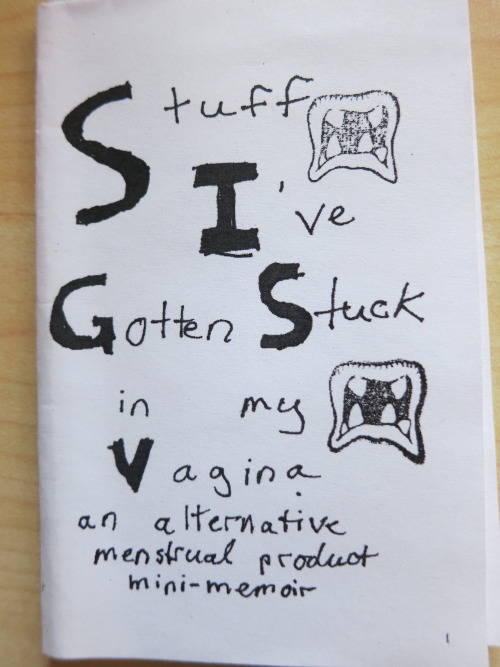Zine Content Comparison
Introduction
As the curator and cataloger of a zine library with holdings going back to the early 1990s I am sometimes asked to comment on how zines have changed over time. I read and catalog zines out of time, as they rise to the top of the processing queue, which makes it hard to respond to that question with confidence, though I have my theories. My suspicion is that zine creators in the 1990s wrote more about sexual assault and critiqued capitalist systems of oppression more than their 2010s counterparts, who are more likely to write about mental health and friendship. My informed assumptions extend to the visual elements of the works, with 1990s creators working primarily, even exclusively, in black and white photocopies with photographs, reproduced zine ads, hand drawings, and riot grrrl fliers, as opposed to more sophisticated reprography, desktop publishing (InDesign, rather than Publisher or analog cut and paste).
Goal
My hope is to show the changes in zine content and presentation over time, perhaps in word clustering, counting, or clouds, exposed in an interactive timeline.
Data & scope
I have nearly 5,000 MARC records for zines and another 8,000 or so records in an Access databases The former can be exported in several formats, including xml, mrc, and txt. The Access file, which I've exported to a spreadsheet can be transformed into I don't know what from CSV. I need to keep the spreadsheet private for now, as it contains some confidential data. I've already deleted zine creators' real names from the file, but need to look it over for other private information before I share it publicly. I think the biggest challenge will be cleaning and merging the two data sources. I feel like the place to start is OpenRefine, but welcome (encourage, request, beg for) other suggestions.
I want to limit the scope of the study to zines by high school and college age girls, so approximately aged 14-22. That will at least halve my sample, possibly even quarter it. My assumption is that there are more zines in the datasets by teens at the earlier end of the time spectrum. This may be to the aging of the zine making population, alternative publishing platforms widely available in the 21st century beginning with popularly adopted blogging sites like LiveJournal beginning in 2001 (confirm) and microblogging social media like Facebook and Twitter in the current decade.
The datasets are comprised overwhelmingly of zines by girl and women presenting zine creators, and zine makers are my area of interest.




A sampling of covers of zines by high school and college students from the 1990s and the 2010s
It should be noted that I am the creator of the Access records, which include basic information, as well as subjective elements like subject description and notes. The MARC records are primarily mine, though another cataloger made some of them. The other cataloger and I are responsible for the basic metadata fields (author, title, Library of Congress subject headings (LCSH), publishing location, etc.), and undergraduates created a key element of the records: the zine summaries that describe the zines in vernacular language.
The Barnard Zine Library has the richest source of descriptive zine data, but it is possible that I could also pull some from other library catalogs, that have added original records to WorldCat, primarily SUNY New Paltz and Multnomah County, which add zine summaries, and Radcliffe and others, which do not, but do contribute controlled vocabulary in the form of LCSH. One thing that makes this collection and dataset particularly appealing is intentional inclusion of zines by creators of color--and the ability to identify them by subject heading and summary content. I would like to be able layer the results, or rather dis-layer them, allowing researchers to separate zines by creator demographics: age, location, race, ethnicity, possibly even class.
Value of the study
This project is meant to further girl studies research, identifying the lives and interests of young anglophone women. I have observed that women in my dataset express the concerns of "everygirl" or in the case of riot grrrl-era zine makers "everygrrrl" coming of age in a world that is hostile to them. Girls are subject to dangerous beauty standards, relentless harassment, culturally embedded microaggressions, and constant challenges to their self-esteem.
Methodology & challenges
I'm not entirely sure how this project will come together. The Access data is particularly messy and not exactly mappable to MARC. Both databases could be mapped to the xZINECOREx metadata schema (essentially Dublin Core, but with slightly different naming conventions) after being cleaned in OpenRefine.
Zines, especially those from the 1990s, aren't reliably dated, so there could be a manual element to locating zines undated zines by year. I am concerned that there won't be enough zines in more recent years, so I'll have to do some testing or consider expanding my parameters or limiting my scope, based on the number of zines by younger zine creators in the 21st century.
At the moment I am not sure what the project will look like, other than I'm imagining a timeline that will illuminate the concerns and inner lives of young women over the last 25 years.
Expanding the project
My fantasy project is developing this into a database similar to Google Books Ngram, maybe a ziNegram. That would be a huge undertaking, involving scanning and OCRing hundreds or thousands of zines, many of which include extensive handwriting, complicating the OCR process. Ideally the art would also be described because art is an essential element in zines, and some even image majority/exclusive, such as minicomics.
Although I don't anticipate copyright concerns, because the zines themselves would not be exposed or identified in Ngram searches, but I am ever conscious of zine makers' good will and would not want to proceed without people in the zine community feeling good about the project.